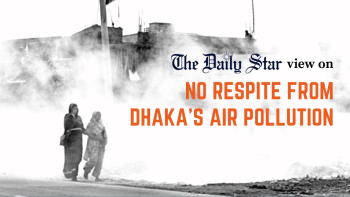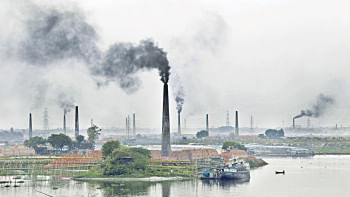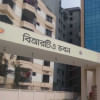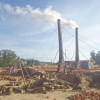Air pollution is not for only one authority to tackle

A recent report revealed that the average life expectancy of Bangladeshis is being cut short by 6.8 years due to their continuous exposure to polluted air. What steps has the government taken in all these years to prevent air pollution?
Air pollution is a complex issue. When reports reveal that air pollution is increasing in the country, we must find out what factors are contributing to this. The last dry season was prolonged and did not end before May, and air quality deteriorated further because of this. The AQI index usually improves significantly during monsoon, as dust and PM2.5 levels decrease due to rainfall. We knew all along that emissions from brick kilns, fumes from vehicles, dust from construction sites and particular industries are the major sources of pollution in the country. But the recent study done by the World Bank has revealed that a major source of air pollution for Dhaka is the burning of coal, wood, agricultural residue and other biomass for cooking purposes in the surrounding districts. We will have to conduct our own study – we call it source apportionment study – to know more about this. We also came to know about transboundary air pollution recently, which is reportedly responsible for 30 to 40 percent of air pollution in Dhaka. So, we are responsible for the remaining 60-70 percent air pollution created domestically.
But we are not always affected by transboundary air pollution, are we?
Yes. Meteorological factors, particularly wind speed, wind direction, and precipitation, have huge impacts on transboundary air pollution. During the dry season, from October till April, wind blows from north to south, and in the absence of rain, highly polluted air (created in several provinces of India and a part of Pakistan, known as degraded airshed in Indo-Gangetic plain) enters Bangladesh through the west and north-west parts of the country and travels through several districts, down to the Bay of Bengal. During this time, our air quality is the worst. But during monsoon, good quality air comes from the south and flows in the northwestern direction. The severity of pollution decreases due to rainfall.
Being the responsible authority, what is the Department of Environment (DoE) doing to reduce the pollution that originates from local sources?
The environment ministry or the DoE alone cannot improve the situation. There are around 13 ministries/divisions and more than 20 departments/agencies involved here, all of whom should be proactive in fighting this menace. For instance, the Road Transport Act, 2018 has given BRTA the power to take steps against pollution from vehicles. Similarly, we are also empowered by the Bangladesh Environment Conservation Act, 1995 to take steps against vehicles emitting black smoke. The traffic wing of police also has specific responsibilities in this regard. But if we want to abate air pollution by enforcing laws and directives, we will need proper coordination and collaboration from all the ministries and agencies concerned, as well as from law enforcers. However, we are trying to play our part.
It's true that the DoE and the BRTA have the authority to fine the vehicles emitting black smokes. The rule is to fine them in the presence of a magistrate. But the number of unfit vehicles on our streets is so high that we cannot frequently stop them, given our limited workforce.
Last year, the government promulgated the Air Pollution (Control) Rules 2022, wherein we introduced a number of positive and effective provisions. As per the Rules, the DoE will come up with a national air quality management plan and implement it. In light of the Rules, the government has formed a high-powered committee, headed by the cabinet secretary, in which all the senior secretaries of relevant ministries, and the heads of DoE, BRTA, Roads and Highways Department (RHD), Rajuk, and the city corporations, among others, are members. As per the High Court's instruction, a committee headed by the secretary of the Ministry of Environment, Forest and Climate Change has already produced a comprehensive guideline in which all sources of air pollution, corresponding activities to reduce the pollution, and responsible authorities/organisations have been clearly mentioned. The guideline has been sent to all the ministries and line agencies concerned.
The DoE has taken steps to bring down the number of brick kilns, which is one of the major sources of air pollution in Dhaka. Currently, around 700-800 brick kilns are operating on the outskirts of the city. The topsoil that is used in these brick kilns is destroying our agricultural land. Every year, we are losing one to two percent of agricultural land – around 130 million tons of soil, annually – which has become a serious threat to our food security. In 2019, the government issued a gazette notification stating that all construction-related government projects/activities would gradually move away from using bricks, except for highway projects. Instead, they have to use non-fired concrete blocks which will not pollute the environment and will lessen topsoil loss. We have around 8,000 brick kilns in the country, more than 70 percent of which are now using a comparatively modern technology named "zigzag," which has reduced pollution to a considerable extent. But our ultimate target is to stop using fired clay bricks altogether and bring down the number of brick kilns to 1,000 within the next few years.

Why don't you take similar action against unfit vehicles and construction companies, which are also polluting the environment? Are they beyond accountability?
The DoE is not the only responsible authority here. The BRTA and the traffic police must play their parts. However, we are trying to put a system in place where the BRTA will have to conduct emission tests before giving fitness certificates to vehicles. It will have to maintain the national emission standards set by the Air Pollution (Control) Rules, 2022. The environment ministry has taken up a big project, with assistance from the World Bank, under which we will set up four automatic vehicular inspection centres in four divisions of the country. Vehicles will be checked automatically and fitness certificates will only be given to those that pass the emission tests. We hope that we will be able to start operating these centres within the next two years. We are starting with four and the BRTA is trying to set up around 10 to 12 more centres.
Black smoke-emitting vehicles are plying our streets right under the noses of authorities, but nothing is being done to stop them. Do you think these centres will actually be effective?
As per the High Court directives and the Road Transport Act, 2018, the vehicles that are running past their economic life should be scrapped. A meeting was held this year, led by the cabinet secretary, in which the relevant ministry, the BRTA, and traffic police were directed to work on this.
But didn't the Road Transport and Highways Division stay such an order recently, amid pressure from transport associations?
Yes, I have also heard about this. But we all must take a coordinated decision that vehicles whose economic lives have expired should not be on the road.
Has the DoE fined any vehicles for emitting black smoke in recent times?
Well, it's true that the DoE and the BRTA have the authority to fine these vehicles. The rule is to fine them in the presence of a magistrate. But the number of unfit vehicles on our streets is so high that we cannot frequently stop them, given our limited workforce.
How about holding the big construction firms accountable for their actions? Don't they have separate budgets for pollution management?
You are correct. The big projects, such as the Dhaka metro rail, have separate budgets for environmental protection or for environmental compliance. But the contractors who are assigned by authorities in most cases avoid these responsibilities. We usually send letters to the authorities of these projects expressing our concerns, and finally impose fines. We fined the metro rail authorities for polluting the environment. Moreover, from November last year till April this year, we have fined many government and private construction companies.
The DoE has undertaken several projects using foreign funds (including from the World Bank) over the past decade to improve air quality. But we are yet to see any results. Rather, the quality of air has deteriorated. Where did the money go?
We have been able to increase our monitoring capabilities under these projects. We now have 31 air monitoring stations across the country – four of them being in Dhaka – from which we get data every 15 minutes. We now get to know of the air quality in all our big cities across the country. Soon, air quality data from these monitoring stations will be made available to the public. Within the next six months, you will be able to access data such as the AQI index as well as the concentration of PM2.5 in a given area on an hourly basis.
Based on these indices, under the Air Pollution (Control) Rules, 2022, we will be able to make informed decisions to improve the air quality of a certain area. For instance, if an area is found to have extremely degraded air, we can suspend the operations of the top polluting industries and brick kilns there, or reduce vehicular movement for a certain period, and even close down the schools in the area until the air quality improves.

 For all latest news, follow The Daily Star's Google News channel.
For all latest news, follow The Daily Star's Google News channel. 












Comments